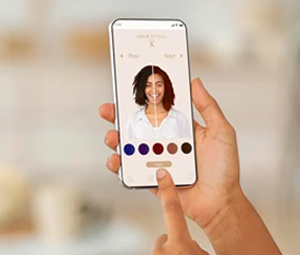
With AI and AR taking the world by storm, it was only a matter of time before the beauty industry joined the others in integrating them into its products and services.
93% of Snapchat users have already expressed interest in using augmented reality (AR) for shopping. Through the use of AI and AR, the beauty industry has been opened up to possibilities ranging from individualized skincare recommendations to virtual try-on experiences. At an age when customers are gravitating towards hyper-personalization, these features fit right in with the times.
Accessibility
Increased personalization also means more inclusivity and accessibility. The Voice-Enabled Makeup Assistant (VMA) app from Estée Lauder is made to be accessible to visually impaired users and provides extensive feedback while the user applies their makeup.
Virtual Try-Ons
The virtual try-on experience is one of the biggest developments in the beauty industry made possible by AI and AR. The development of AI-driven virtual try-on tools has made it possible for customers to try on different cosmetics without actually going to a store. Customers can see how they look without physically applying anything – they can see how different shades and styles look on their skin before making a purchase.
Shade Matching
Finding the perfect shade for your complexion products has always been an uphill battle. AI can apparently take factors like skin tone, texture and lighting into account and give you a perfect shade match.
Is It Too Good To Be True?
Racial bias is one of the darker aspects of AI in beauty. It has been discovered that AI-driven algorithms exhibit certain racist and sexist behaviors. For example, when tasked with facial recognition, the software has demonstrated significantly higher error rates while recognizing the faces of black women than that of white men.
However, brands like Estée Lauder are working to eliminate these biases. “How an AI is trained is really critical,” says Lamia Drew, Estée Lauder’s global director of inclusive technology and accessibility. “When creating VMA, we used thousands of images all across the Fitzpatrick scale to train the AI so that it could be capable of analyzing any face. That means accounting for diversity, skin tones, and face shapes across the board. By the time we had a product to test, we had used another 50,000 images to help fine-tune the algorithm.”
This means that as long as brands are aware of their social responsibility and are willing to put in the extra effort to uphold it, AI and AR can flourish in the beauty space.
- Apple Will Soon Integrate Apple Intelligence Features to Vision Pro - July 8, 2024
- DeepMind’s New AI Can Generate Sound and Dialogue for Videos - June 27, 2024
- DuckDuckGo’s “AI Chat” to Give Anonymous Access to Popular Chatbots - June 22, 2024




